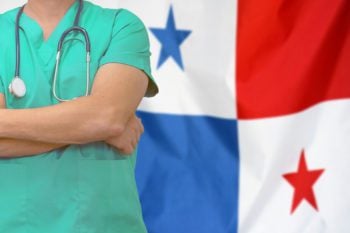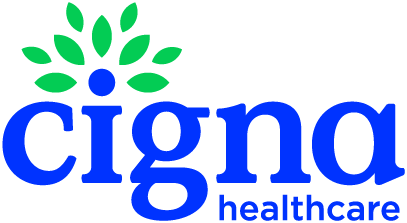 Panama is a tropical isthmus of rainforests and cities connecting North America and South America. It is also known as the home of the Panama Canal, the man-made passage from the Atlantic to the Pacific Ocean built by the United States from 1904-1914. Due to its warm climate, miles of beaches, and affordability, Panama has become a popular location for expats, especially retirees. Foreigners also enjoy the benefits of the affordable Panama healthcare system.
Panama is a tropical isthmus of rainforests and cities connecting North America and South America. It is also known as the home of the Panama Canal, the man-made passage from the Atlantic to the Pacific Ocean built by the United States from 1904-1914. Due to its warm climate, miles of beaches, and affordability, Panama has become a popular location for expats, especially retirees. Foreigners also enjoy the benefits of the affordable Panama healthcare system.
Panama’s overall healthcare system was ranked at number 95 of the top 100 healthcare systems in the world, but most expats prefer the country’s private hospitals to its public ones. The elite private facilities – some with ties to top U.S. hospitals – provide faster and more specialized care with patient comfort as a top priority. While there isn’t a difference in currency (you can use U.S. dollars in Panama), the cost of excellent private healthcare in Panama is much lower than in the United States. Still, with prices on the rise, insurance is still highly recommended.
This guide will provide expats and digital nomads with what they need to know to navigate the healthcare system in Panama.
An Overview of the Panama Healthcare System
Panama has a public healthcare system funded through taxes and operated by two government agencies, the Social Security Fund (Caja de Seguro Social, or CSS) and the Ministry of Health (Ministerio de Salud, or MINSA). MINSA operates public clinics called polyclinicas and regional hospitals that offer the public low-cost health services. CSS manages its public hospitals in Panama, which provide care for those paying into the government Social Security Fund through their payroll. Internationally recognized private hospitals operate alongside this system, where you can pay more for fast and exceptional care.
The Pros and Cons of Panama’s Healthcare System
Panama’s government agencies offer affordable healthcare and there are local efforts underway to improve public healthcare facilities. But the amenities are basic and the system is under strain. Private hospitals offer the comfort and amenities you expect to find in the U.S. and Europe. Consider the following pros and cons when deciding how to address your healthcare needs in Panama.
Pros of the Panama Healthcare System
The public healthcare system in Panama provides access to affordable care for nearly all of its 4.4 million residents – including visitors. Many doctors in the country have studied in the U.S. or Europe and often speak English. Doctors working in the private system are required by law also to keep some hours for the public system.
Residents paying into the CSS through employee and employer contributions are completely covered. For others, such as contractors or expats, adequate general healthcare is still accessible at low cost through the MINSA-run public facilities. If you’re admitted to a MINSA hospital, expect the bare minimum in amenities. Expats in Panama have reported that MINSA facilities are typically “dorm style,” offering minimal privacy and comfort.
For those able to pay more, excellent private hospitals are available with many boasting the coveted Joint Commission International (JCI) accreditation and U.S. affiliations. Hospital Punta Pacifica in Panama City, for example, is the only Central American hospital affiliated with Johns Hopkins Medicine International. Private care is much more expensive than the public facilities, but it is still significantly cheaper than in the U.S. and Europe. Take note that private hospitals typically require patients to pay the estimated visit costs before receiving care.
Cons of the Panama Healthcare System
While Panama’s public system offers good physician care, its overall quality is still ranked well below most of Europe and the United States. Visitors will find Panama’s MINSA healthcare facilities operating out of older buildings with limited beds or dated equipment. Expats report long wait times and a lack of basics like bedding and toilet paper. Public hospitals can also be short-staffed and patients often need family members to come in and bathe them. For all of these reasons and more, it’s best to purchase private health insurance in Panama and go to a private hospital.
Even before the COVID-19 pandemic, Panama’s efforts to improve its public healthcare system met hurdles. For example, CSS is constructing a massive new health complex called Ciudad el Salud Hospital (Hospital City) in Panama City. It is slated to be the most modern public health facility in Central America, but corruption investigations caused a seven-year delay. Building finally resumed in 2021, and the hospital was opened at last in January 2024. Its quality and accessibility remain to be seen.
Access to care is not equal across Panama’s lush terrain. This could affect where you choose to live. If you want to be near multiple elite private hospitals, you’ll be better off living in one of Panama’s major cities. Private institutions are fewer and farther between in rural areas. Also, many of the internationally-educated and well-paid private doctors prefer to live and practice near city amenities. Most places in this small country will only be a few hours’ drive away, but in an emergency, that might be too long.
Challenges of the Panama Healthcare System
At a public hospital in Panama, fewer specialists will care for a higher volume of patients than at a private hospital. Sometimes, certain medications are not immediately available, although Panama is trying to address this problem. These factors can increase wait times and will not meet the expectations and standards of many expats.
While 14 percent of the population speaks English – including many in the medical field – the official language of Panama is Spanish. If you don’t speak Spanish, you are sure to run into more language barriers at public healthcare facilities in rural areas than at private ones.
When you’re choosing where to live in Panama, check on the distance to the nearest hospital. Panama’s beautiful terrain includes winding roads through mountains and jungles. Weather, traffic and accidents can increase the estimated driving time. If you’re in a rural area, it’s important to consider that your nearest emergency room could be as much as a 30-45 minute drive away.
Read More: Travel Insurance for Visitors to Panama
Does Panama Have Universal Healthcare?
Panama does not have universal healthcare by definition. Its public system through CSS covers about 79% of the population, according to the BTI Transformation Index. The remainder has access to a low-cost government-run option through MINSA. These two tiers provide affordable healthcare access to nearly all Panamanians and visitors and help keep costs low. Even private-sector care is affordable in Panama when compared to the U.S. or Europe, creating a thriving medical tourism industry in certain parts of the country.
If you heard that Panama allows visitors to use the public healthcare system for free for emergencies within their first 30 days of arrival, please note that this program ended due to rising costs.
Social Security Fund (CSS)
Expats can participate in CSS only if they are employed permanent residents and pay taxes to the government of Panama. Dependents are also included in the CSS system. Employers are in charge of making the monthly payroll withholdings and contributions to CSS. The deduction is 9.75 percent of each employee’s paycheck plus a 12.75 percent employer contribution. It’s worth noting that not all of this amount goes toward healthcare since CSS also manages economic benefits, including pension and disability plans.
- Social Security Fund (CSS)
- Dental: No
- Optical: No
- Mental Health: No
- Physical Therapy: No
- Alternative Care: No
- Prescription Drugs: CSS covers 610 basic medications for patients, but some expensive medicines may need to be paid out of pocket. Sometimes already expensive medications are even more expensive in Panama than in countries like the U.S. The drug you need may be available over the counter in Panama, so it’s a good idea to check.
Ministry of Health (MINSA)
Using the MINSA polyclinicas and regional hospitals is a simple process. After receiving care, patients will be asked to pay before leaving the facility. To use MINSA facilities, you do not need to pay for anything in advance or pay any monthly fee. The costs for care are extremely low – an entire emergency room visit could cost as little as USD$50-100. If you cannot pay the total at that moment, you can set up a monthly payment plan.
- Ministry of Health (MINSA)
- Dental: No, but dental care is much more affordable than in the U.S.
- Optical: No
- Mental Health: No
- Physical Therapy: No
- Alternative Care: No
- Prescription Drugs: No, but basic medications may be very affordable. The drug you need may be available over the counter in Panama.
How to Access & Receive Healthcare in Panama
Non-Emergency Care
Private Hospitals
To visit a private hospital for a non-urgent matter, use the hospital’s website to browse the services and packages available. You can typically schedule your appointment online or call the hospital directly to book. Some private hospitals have an online pre-admission form. If so, complete the form and upload the necessary identification documents to prompt a scheduler to call you. If you have insurance, be sure to request pre-authorization for your upcoming appointment. Most private hospitals in Panama will ask you to pay in advance for the estimated cost of the care you are about to receive.
Public Hospitals
To access quality care quickly, you should go to a private hospital. However, if you absolutely need to go to a MINSA public hospital for non-urgent care, you should try to call ahead and make an appointment to see a doctor. Unfortunately, it is common to show up and wait long past your appointment time due to the high volume of patients and limited staff. Little can be done, so prepare yourself as best as you can. The costs reflect the limited amenities at MINSA facilities. A visit with a general practitioner at a public hospital may cost around USD $9-11 – or, USD $0 if you’re covered by CSS.
Dental, Eye, and Mental Healthcare
Vision, dental and mental health care are not covered or subsidized by the public healthcare system. Dental coverage, in particular, is much cheaper than in the U.S. but can still be costly depending on the service you need. As for prescription drugs, certain expensive medications may be even more expensive in Panama. However, some medications that require prescriptions in the U.S. are available over the counter in Panama. It’s always good to check first!
Emergency Care
Private Hospitals
In an emergency, you can transport yourself, arrive at the emergency room of a private hospital in Panama, and check in to be triaged. While most private hospitals in Panama will ask you to pay in advance for the estimated cost of your care, this may vary depending on your condition.
Public Hospitals
What if you need care and a private hospital is too far away? You can always find one of the approximately 902 MINSA and CSS facilities anywhere in the country. Even CSS hospitals will take you in an emergency. They are often white and green buildings and are more spread out in rural areas.
How to Plan Ahead for Emergencies
- Before an emergency strikes, get to know where your nearest private and regional hospitals are located. If you live outside the city, a MINSA hospital might be a significant drive but a private hospital could be even farther.
- Ambulances typically come from the MINSA regional hospitals and should be partially subsidized for non-CSS patients. Private ambulance services do exist in some areas and the companies typically offer monthly memberships to cover them.
- Unfortunately, only Panama City has the emergency line 9-1-1 and the operators only speak Spanish. Learn to say your address in Spanish along with other emergency words and phrases in case you need an ambulance. It could save your life.
- Suppose you’re worried about the language barrier or living outside the city. In that case, there are local bi-lingual emergency services hotlines you can sign up for in advance for a fee to assist you in emergencies.
Who is Eligible for Panama Healthcare?
Private institutions can be used immediately by expats and other visitors upon arrival, though you will want your international insurance plan set up ahead of time. Some hospitals and services offer insurance plans of their own.
Expats can also immediately use the MINSA facilities upon arrival to Panama and pay the low out-of-pocket costs. Any ex-pat using the system should prepare for the severe lack of amenities and comforts at these public facilities.
To be eligible for CSS coverage, expats need to have employment in Panama and pay taxes to the government of Panama. There is also a public healthcare system for the poorest people in Panama, but only Panamanian citizens are eligible.
Healthcare for Foreigners in Panama
Thanks to its three-tiered system, there are options for healthcare in Panama. While expats can access quality healthcare through the MINSA facilities, Panama’s private hospitals and services are top-rated and will provide the level of service expected in the U.S. or Europe. Expats may want to take advantage of their new proximity to these elite private institutions, which are more affordable with an international health insurance plan.
Expat Insurance for Panama
Most foreigners use the private system along with private health insurance in Panama for faster care in English and the benefit of more modern facilities and comfort. Even with a private insurance plan, many expats use all three tiers of Panama’s healthcare system over time. Having options regarding your healthcare needs might provide peace of mind – and leave more time for the beach.
Health Insurance Options for Foreigners Living in Panama

Cigna Global Insurance Plan
- The flexibility to tailor a plan to suit your individual needs
- Access to Cigna Global’s trusted network of hospitals and doctors
- The convenience and confidence of 24/7/365 customer service

Xplorer Worldwide Medical Plan
- Premium Benefits, Coverage and Service
- Define your deductible and prescription benefits
- For Foreigners in the US or US citizens abroad
Author: Amanda D. Hoffman is a content editor at International Citizens Insurance. She been living a slow-travel, independent-location lifestyle since 2017, exploring more than 16 countries over 5 continents — and counting. From art to history to local political and social issues, she is always eager to learn about her surroundings and make new connections. As a rare disease patient and advocate, she has unique insight and interest in healthcare cost and access while traveling.
